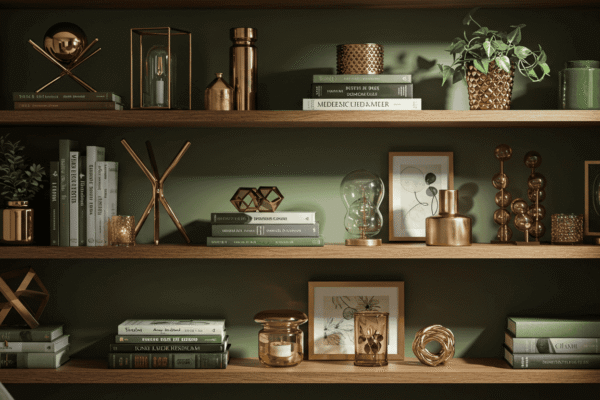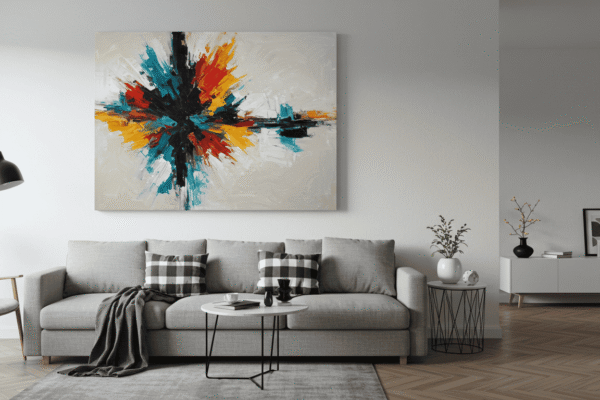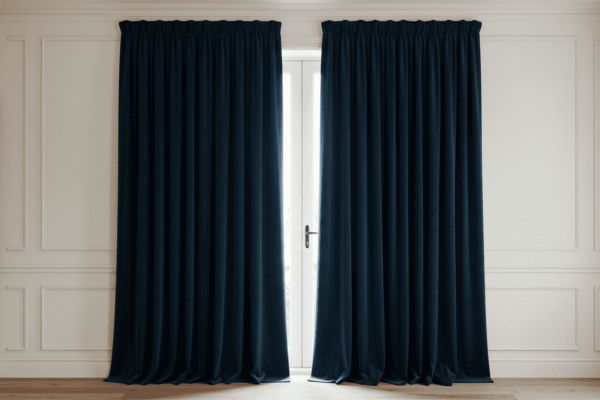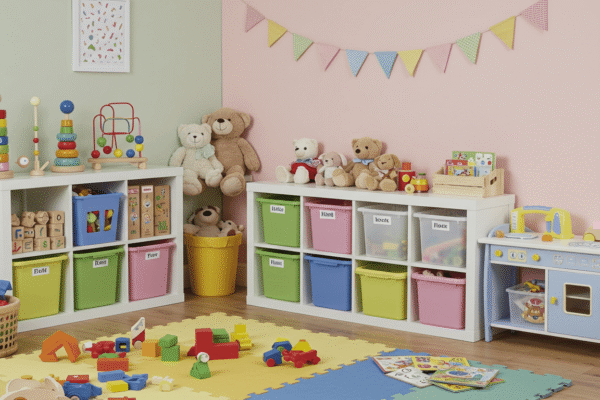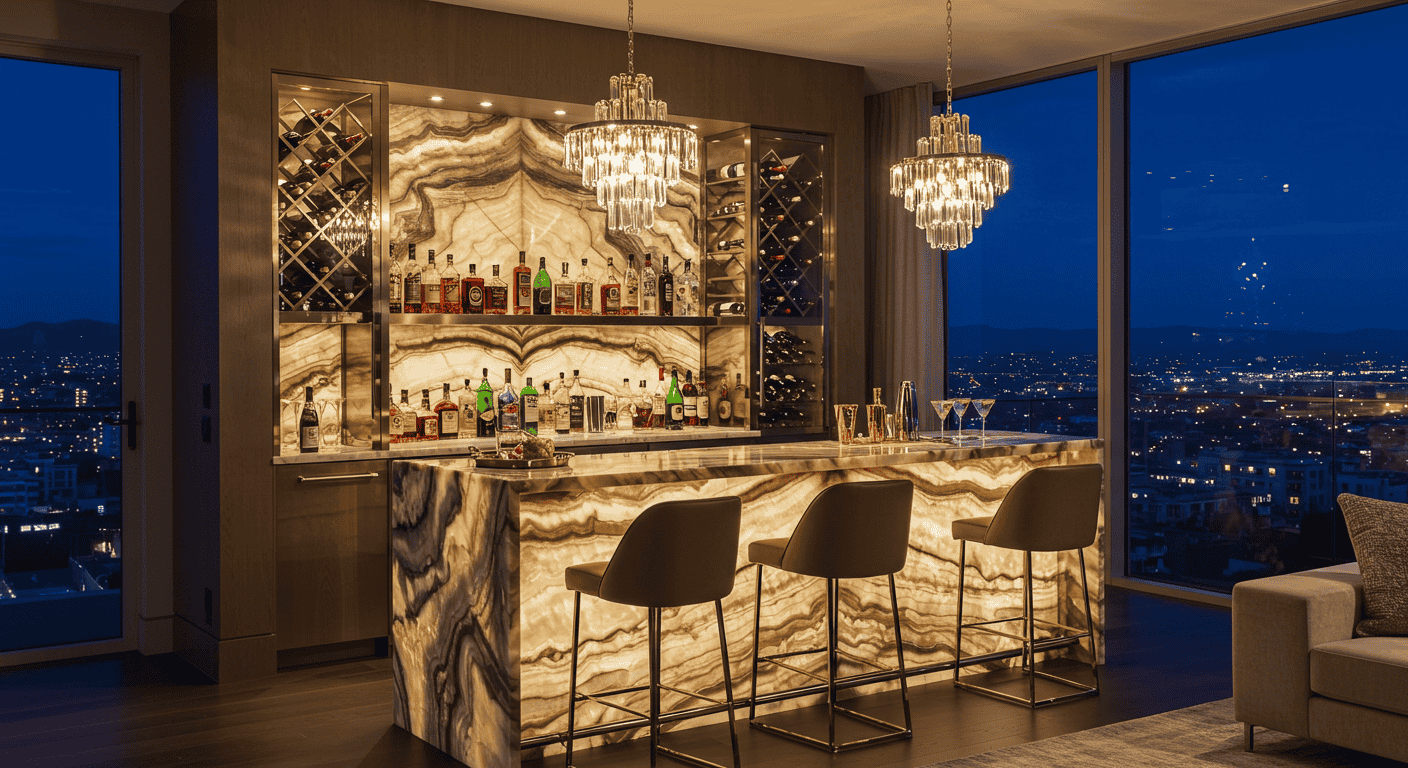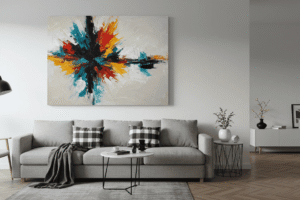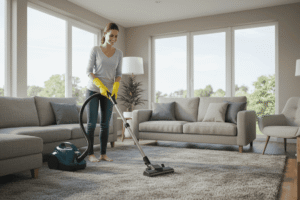Luxury is often defined by the details. In interior design, one of the fastest-growing trends has been the addition of Home Bars—spaces that combine style, function, and entertainment into a striking centerpiece. A home bar is no longer a casual side cabinet for basic drinks; it has become a fully realized part of living spaces, reflecting personality, sophistication, and attention to hosting. This article serves as an in-depth guide to designing, styling, and utilizing home bars that elevate social gatherings, making every cocktail served and every gathering hosted an unforgettable experience. Covering everything from location and style choices to lighting, spirits, appliances, and hosting tips, we will explore how to transform an ordinary space into an extraordinary luxury feature of your home.
Choosing the Perfect Location for Home Bars
Before diving into the aesthetics, choosing where to place your bar is one of the most important decisions. The location determines convenience, functionality, visibility, and atmosphere. It must balance accessibility for entertaining with the ability to harmonize with your home’s flow and interior aesthetic. Whether you prefer a centrally positioned entertaining hub or a secluded hideaway for intimate occasions, determining the right placement is the foundation of great design.
Main Living Areas as Bar Spaces
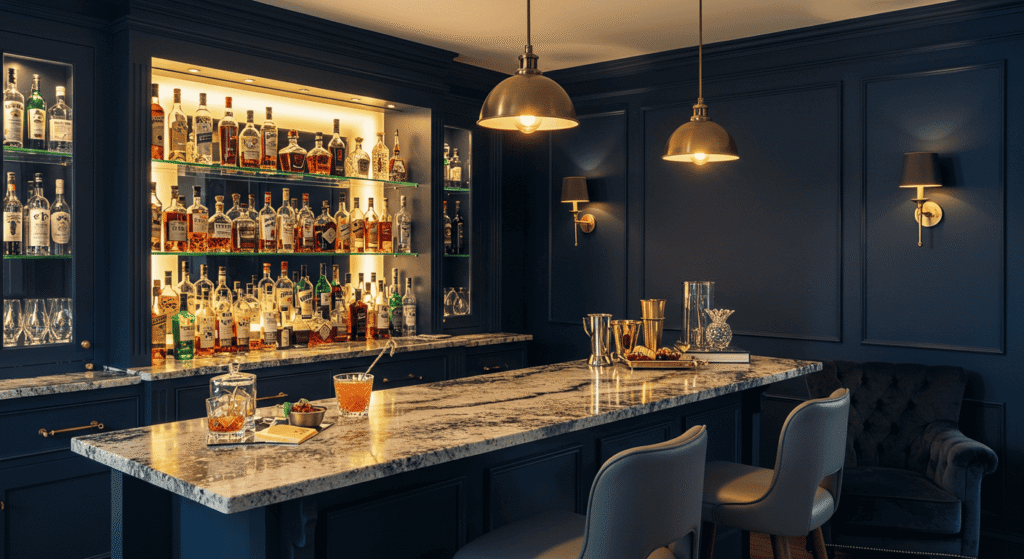
In many homes, the living room or open-plan main area serves as the natural gathering space, making it a prime location for your bar. Having Home Bars in these central locations keeps your entertainment zone lively and social. Guests will intuitively gravitate toward the bar, as it becomes a point of convergence for conversation, entertainment, and relaxation. Moreover, in contemporary design, open-concept living means spaces should serve multiple functions seamlessly—and adding a well-designed bar aligns perfectly with this principle.
Advantages of Central Placement
The biggest advantage of visibility and accessibility is guest comfort. By having your bar in the main living areas, hosts can serve drinks while staying present in the gathering—no trips away to separate areas. It also creates an architectural focal point, much like a statement fireplace or a feature wall, commanding attention and exuding sophistication when guests enter the space. The integration of displays—such as artful arrangements of glassware, mirrored backdrops, and illuminated shelving for spirits—can transform an ordinary room into a showroom of luxury.
Considerations for Integration
Placement in these areas requires thoughtful design to ensure harmony with the overall room style. Built-in cabinetry that conceals appliances when not in use is common, preventing clutter or commercial looks. For modern spaces, sleek matte materials ensure the bar disappears when closed; in classic designs, ornate woods and brass handles tie the bar into the room’s existing décor. In small homes or apartments, fold-away wall bars or compact rolling carts can still provide elegance without overwhelming square footage.
Basement Bars for Ultimate Privacy
Basements remain popular as they offer privacy and an escape-like atmosphere, ideal for those who want Home Bars to double as entertainment lounges. These setups cater to dedicated entertainers who want full control over ambiance: think of plush chairs, dimmed lighting, curated sound systems, and even partitioned areas for billiards or movie screenings. They create environments akin to private clubs, complete with every element of glamor and exclusivity.
Creating a Lounge Vibe
A basement bar can be designed to replicate the ambience of an upscale speakeasy. Textures like exposed brick, leather upholstery, wood-paneled walls, and brass hardware reinforce sophistication. Accent lighting and decorative elements such as neon signs or art installations create an atmosphere difficult to achieve in busy living areas. Think curated record collections, unique artwork, and walls lined with books or memorabilia that reflect your personality.
Function Meets Design
Designing in basements must address practical considerations. Ventilation is critical as moisture or limited air circulation can damage stored spirits and amenities. Choosing durable surfaces that resist humidity ensures longevity. Meanwhile, integration like a refrigerated wine cellar, humidor spaces, and storage closets for seasonal inserts add functionality without sacrificing aesthetics. With proper forethought, a basement bar becomes a destination point within your home, turning gatherings into full-fledged experiences.
Design Styles for Home Bars
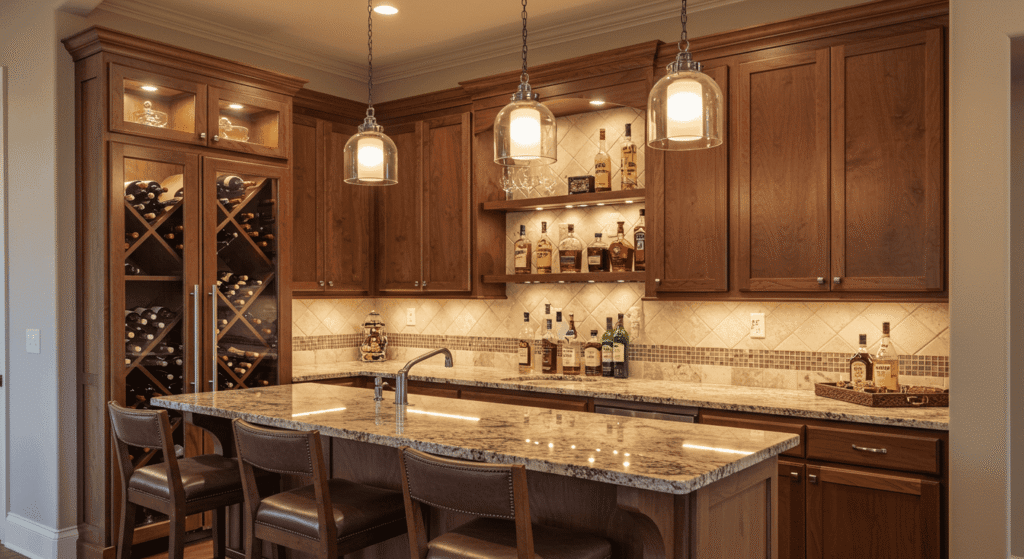
The design style of Home Bars sets the foundation for atmosphere, shaping how guests perceive and use the space. Style is deeply personal, influenced by both practical elements of the home and the emotional experience you want to evoke during entertaining. From ultra-modern chic to timeless rustic warmth, here are some detailed approaches.
Modern Home Bar Design
Modern home bars emphasize polished materials, geometric symmetry, and sleek storage. Design trends lean toward simplification: less clutter, more purposeful displays. Sleek stainless steel faucets, glossy marble counters, and floating glass shelves are common. Many modernistas also integrate technology, such as automated dispensing units or smart lighting systems responsive to mood presets.
Color Palettes and Materials
Neutral colors dominate, but accents shine through lighting. For example, a granite countertop with a waterfall edge makes a bold statement, complemented by the reflective qualities of glass shelving and mirrored backsplashes. Chrome or brushed nickel bar stools unify the theme, but touches of warm wood can soften the sterility without detracting from the look’s sophistication.
Minimalist Layouts
The mantra “less is more” applies directly. Instead of rows of bottles, homeowners may showcase just a small curated collection of premium spirits, selected barware, and art-inspired decanters. Concealed storage keeps functionality intact but avoids overwhelming the aesthetic. Floating bar counters or under-counter fridges integrated seamlessly help contribute to minimal visual noise.
Rustic Charm in Bar Design
For those attracted to the warmth of old-world appeal, rustic styling conveys a cozy charm. It recalls cabin lodges or vineyard escapes, encouraging guests to relax in an inviting setting. Rustic Home Bars contrast modern sleekness with tactile charm: every knot in the wood, every natural imperfection, and aged patina contributes to narrative and authenticity.
Natural Materials
Reclaimed wood countertops, stone walls, and copper elements create rugged beauty. Distressed timber beams not only reinforce structure but also lend visual gravitas. When paired with Edison-style filament bulbs or wrought-iron chandeliers, the rustic setting evokes warmth and intimacy. Choosing eco-friendly, salvaged woods also resonates with sustainability-focused homeowners.
Decorative Accents
Rustic bars thrive on layers of detail: a mounted antique mirror, handmade pottery mixing vessels, mason-jar-inspired lighting, or iron hooks for hanging beer mugs. Textiles in natural patterns—like leather seats or woven wool cushions—add tactile comfort. Such spaces showcase a slower lifestyle, reminding people of hospitality traditions rooted in comfort and storytelling. Useful inspiration can also be found at Amelia’s Tips.
Luxury Seating for Home Bars
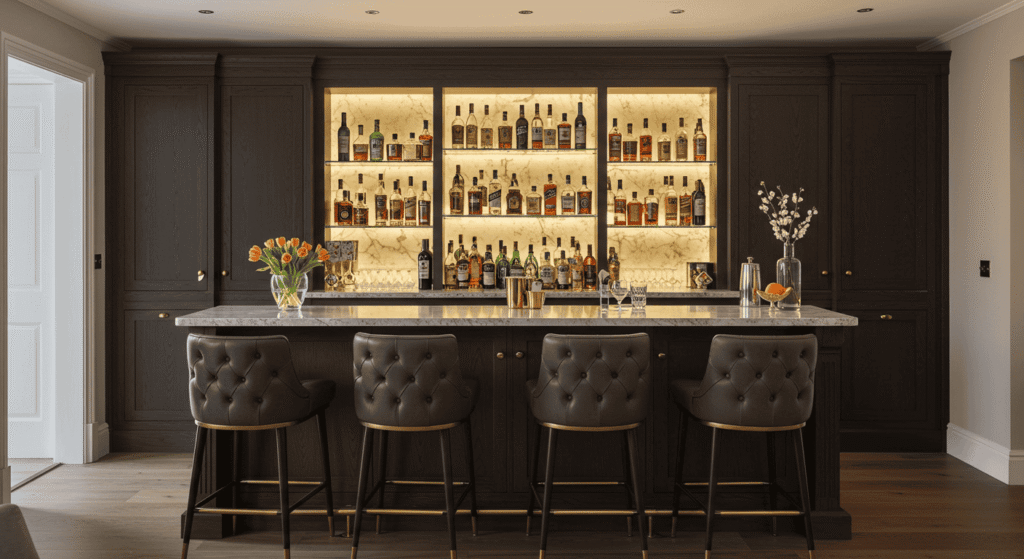
Luxurious seating transforms a home bar from a utilitarian setup into a truly livable space. It determines whether guests linger comfortably. Every bar should balance aesthetics with ergonomics, ensuring visual appeal while delivering support, durability, and style continuity with interiors.
High Stools at the Counter
Counter stools evoke unmistakable bar ambience. These allow guests to sit close to the action while engaging directly with the host mixing drinks. With correct design, stools can create a chic ‘cocktail hour’ atmosphere reminiscent of luxury resorts or lounges.
Choosing the Right Height
The stool-to-counter ratio must be considered carefully. Common practice suggests that stool heights should be 10-12 inches shorter than the bar counter. This ensures comfortable dining or drinking posture for extended periods, avoiding cramped leg space.
Blending with Décor
Choose stools that mirror architectural or furniture themes. Minimalist homes may prefer sleek steel-framed stools, while vintage-inspired homes embrace weathered leather seats. Color contrast also matters: rich emerald or sapphire seat cushions can create stunning focal points against neutral-toned bars.
Lounge Seating Options
Lounge seating adds variety to your space and caters to those who prefer relaxed interactions over sitting upright at bar counters. Luxurious armchairs, sectional sofas, or chaise lounges create intimate conversational corners adjoining the bar area, making it functional as both a drink-mixing station and a social retreat.
Space Enhancing Layouts
Lay out the lounge furniture to guide flow. A semi-circle formation with plush seating and low-rise coffee tables ensures inclusivity and enhanced guest interaction. In open-plan designs, rugs can demarcate these zones elegantly without building walls or partitions.
Material Choices
Material choice influences both durability and perception. Leather suggests timeless luxury, velvet adds tactile indulgence, and wool offers warmth. Upholstery filled with high-density foam ensures longevity while withstanding frequent hosting use. Textiles should also embrace colors within your larger palette for mealtime harmony.
Lighting the Bar
Lighting is perhaps the single most transformative tool in shaping mood. Great Home Bars recognize this and use layered combinations of accent illumination, task lighting, and ambient glow. The right balance takes a space from casual to cinematic.
Accent Lighting
Shelf lighting draws eyes to curated spirits and accessories. Hidden LEDs give bottles a floating appearance, turning even everyday brands into artwork. Coloured light systems can change the tone of the evening—blue for cool sophistication, red for vivacity, warm amber for intimacy.
Placement Tips
Placing lights at the back edge of shelves rather than overhead prevents glare while ensuring bottles sparkle naturally. Use frosted panels to diffuse brightness and create subtle uniform glow.
Energy Efficiency
Modern LED solutions ensure low-energy consumption. Moreover, smart integrations allow remote adjustment of colour and brightness to save costs and adapt events instantly.
Ambient Lighting
Ambient lighting creates the atmosphere of the entire room. Pendant lights suspended above counters or decorative sconces provide charm while ensuring visibility. Together with accent light, they build layers of texture and highlight décor choices.
Mixing and Layering Light
Relying on one source creates flatness. Contrast is necessary: balance dim sconces with focused counter spotlights. Mixing temperature values—such as cooler task lighting with warmer background sconces—also improves atmosphere.
Control Systems
Dimmers and app-controlled lighting extend flexibility. Scenes can be set for cocktail hours, dinner hosting, or post-dinner relaxed ambience. Integration with voice assistants enhances convenience while entertaining.
Essential Barware and Appliances
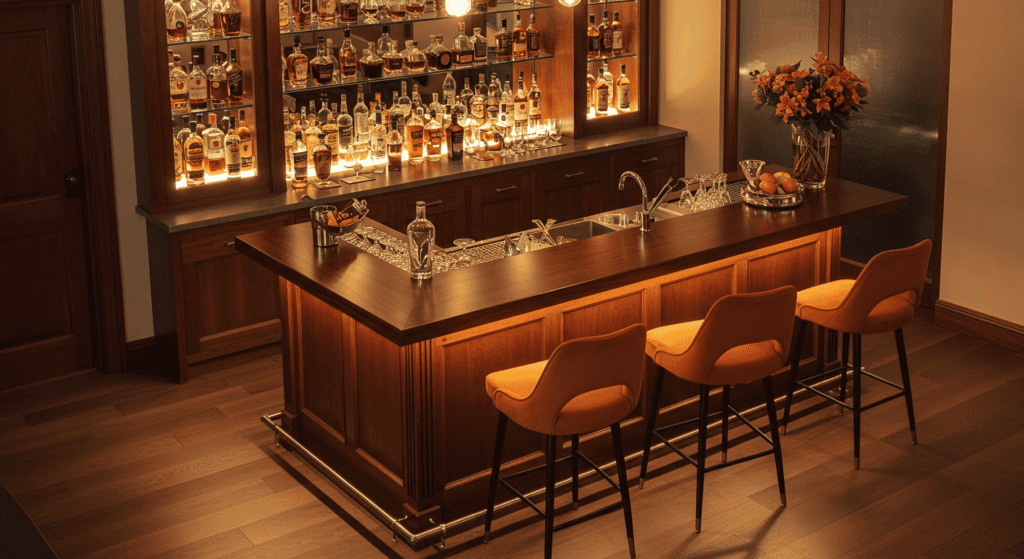
Even the most visually stunning Home Bars require functionality. Tools, gadgets, and appliances create professional-grade experiences. Ignoring this aspect reduces luxury setups to just showpieces.
Shakers and Mixers
Shakers symbolize mixology itself, forming the foundation for cocktails. Boston shakers facilitate efficient shaking for skilled users, while cobbler shakers suit beginners with integrated strainer systems. Mixing spoons, fine strainers, and weighted measures add flourish.
Why Quality Matters
Cheap tools dent or warp. High-grade stainless steel maintains integrity, ensuring cocktails stay chilled and properly aerated. Superior quality communicates refinement in hosting, as guests perceive results in presentation and taste.
Additional Gadgets
Essential complimentary gear includes citrus pressers, jiggers for accurate pours, and garnish peelers. Together, these enable precision and experimentation without amateur mistakes.
Refrigeration and Cooling Units
No luxury bar thrives without proper cooling. Built-in under-counter fridges, dual-zone wine coolers, and integrated ice machines add convenience and class.
Wine Preservation
Dual-temperature coolers sustain whites and reds simultaneously. UV-coated glass prevents spoilage. For collectors, larger walk-in cellars can be temperature-layered with smart systems for remote control.
Ice Makers
Lasting ice supply matters. Premium ice machines provide options like cube sizes, crushed, or clear ice—enhancing cocktail authenticity.
Stocking the Right Spirits
Stocking defines usage. Premium Home Bars focus equally on essentials and specialties. Avoid chasing quantity—focus instead on housing a reasonably diverse collection with premium foundations.
Basic Spirits
The “big five” are vodka, gin, rum, tequila, and whiskey. They form the building blocks of hundreds of cocktails. Stocking premium versions of each ensures everything from martinis to margaritas can be executed with finesse.
Choosing Brands
Select one or two premium bottles of each variety. Choose vodkas known for smoothness, rums for distinct aging, and whiskeys that impress connoisseurs. Guests may not always recognize rarity but will appreciate quality in taste.
Budget Balancing
Mix high-end with mid-range. Carry a $100 bottle of whiskey for special pours and everyday affordable labels for mixed cocktails. This caters inclusively without unnecessary extravagance.
Wines and Specialty Bottles
Luxury home bars excel when integrating wines and specialty liqueurs. Sparkling wines or Prosecco suit celebrations, reds elevate dinners, and fortified wines diversify after-dinner sips. Liqueurs like Grand Marnier, Chartreuse, or Amarula enrich cocktail repertoires.
Collectors’ Items
Incorporating limited-edition spirits or vintage wines enhances narrative for conversations. Scarcity communicates rarity and exclusivity.
Serving Temperatures
Bars with thermometers, decanters, and chillers adapt wines and whiskeys to optimum serving temperatures, enhancing complexity of taste profiles.
Styling Décor Accents
Décor is where Home Bars shift from functional furniture to lifestyle statements. Styling is deeply personal yet defines how long guests interact with admiration.
Wall Art and Accents
Frame carefully chosen prints—vintage alcohol ads or abstract art. Mirrors strategically double light. Neon signage in upscale design adds playful appeal without compromising refinement.
Feature Walls
Cover sections behind counters with statement wallpapers, bold geometric tile, or a striking marble slab. A feature wall anchors the design much like an artwork installation.
Personal Touch
Adding memorabilia, curated collections, or photos of global travels turns an impersonal bar into a lifestyle showcase, reflecting not only luxury but soul.
Practical Storage as Décor
Storage choices play a functional role but visually compete with art. Transparent shelving elevates bottles into art installations while concealed cabinetry reduces clutter.
Open Shelving Ideas
Floating glass or wood shelves with accent lighting elevate prized liquor collections.
Closed Storage
For minimalists, cabinetry fronts with lacquered or timbre finishes streamline aesthetics while hiding excess.
Hosting & Entertaining Tips
Ultimately, home bars succeed when paired with thoughtful hosting techniques that create lasting impressions. Interior beauty must be matched with confident, gracious service culture to truly impress guests.
Creating Signature Cocktails
A signature house cocktail elevates entertaining into memorable branding. By combining unique liqueurs, herbs, and garnishes, hosts communicate creativity luxury can be tasted.
Balancing Flavors
Build complexity by mixing sweet, sour, bitter, and savory notes. Experiment with seasonal herbs like rosemary sprigs or infused syrups for uniqueness.
Involving Guests
Hosts can encourage guests to try mixing under guidance, creating playful memories while breaking the ice—turning events collaborative.
Music and Atmosphere
Ambiance matters as much as cocktails. A curated playlist reinforces mood: jazz for refinement, contemporary beats for energetic nights, classical for quiet dining evenings.
Audio Integration
Bespoke speaker systems embed invisible sound. Integration with lighting allows synchronized ambiance control across music, sight, and vibe.
Decor-Themed Playlists
Jazz quartets suit art-deco interiors; acoustic folk accompanies rustic spaces; electronic beats elevate modern chic designs. Music loyalty enhances immersion.
Conclusion
The evolution of Home Bars represents lifestyle progression: alongside kitchens and living spaces, bars reflect a host’s taste, attention to detail, and luxury hospitality mindset. By carefully selecting placement, adopting styles general or unique, investing in appliances, building thoughtful décor, and stocking essentials, homeowners elevate both their environments and social gatherings. More than blended spirits, they build rooms of blended experiences—a place where luxury seamlessly meets memory-making. For even more inspiration, consider resources like Amelia’s Tips or Architectural Digest, which provide further insight into artful entertaining spaces.


